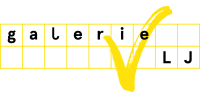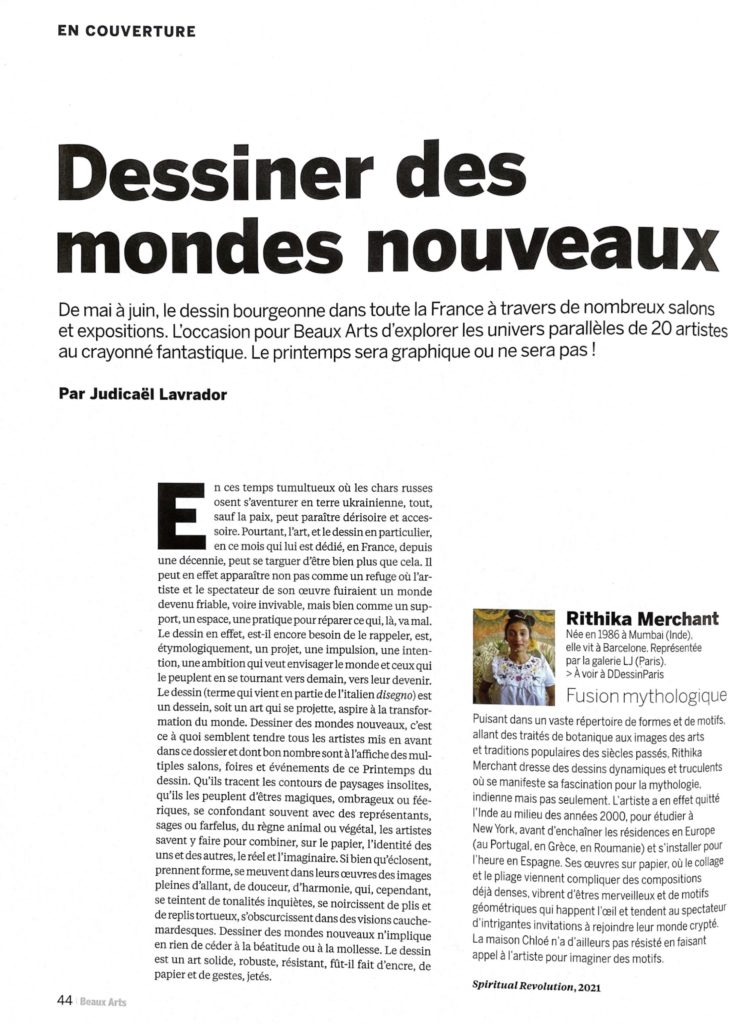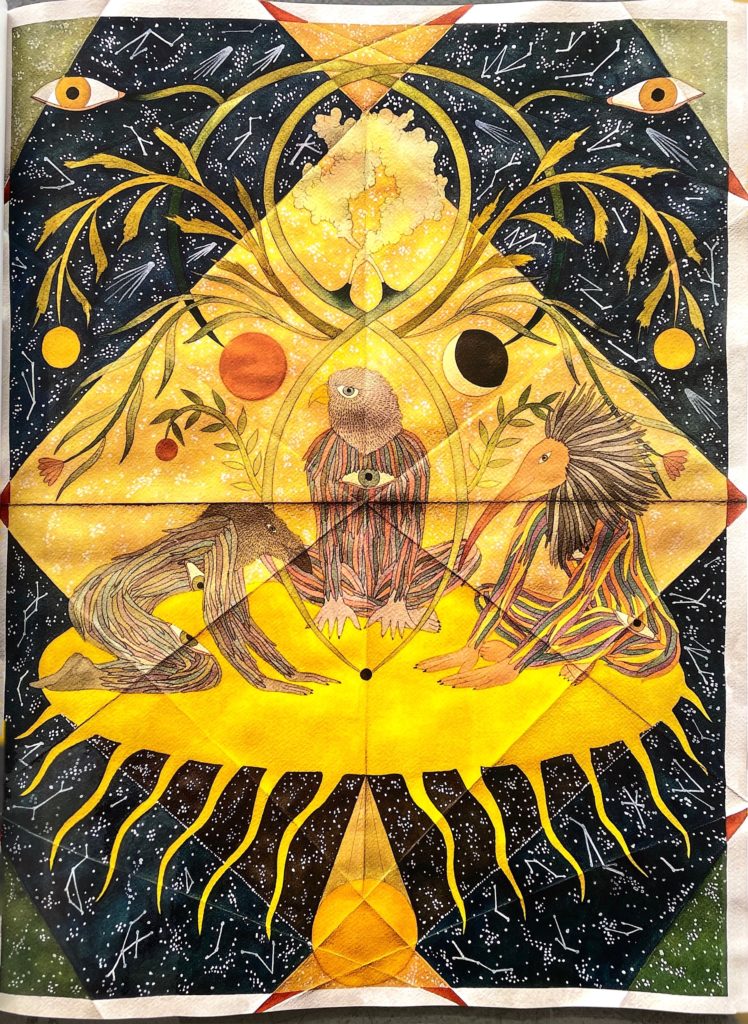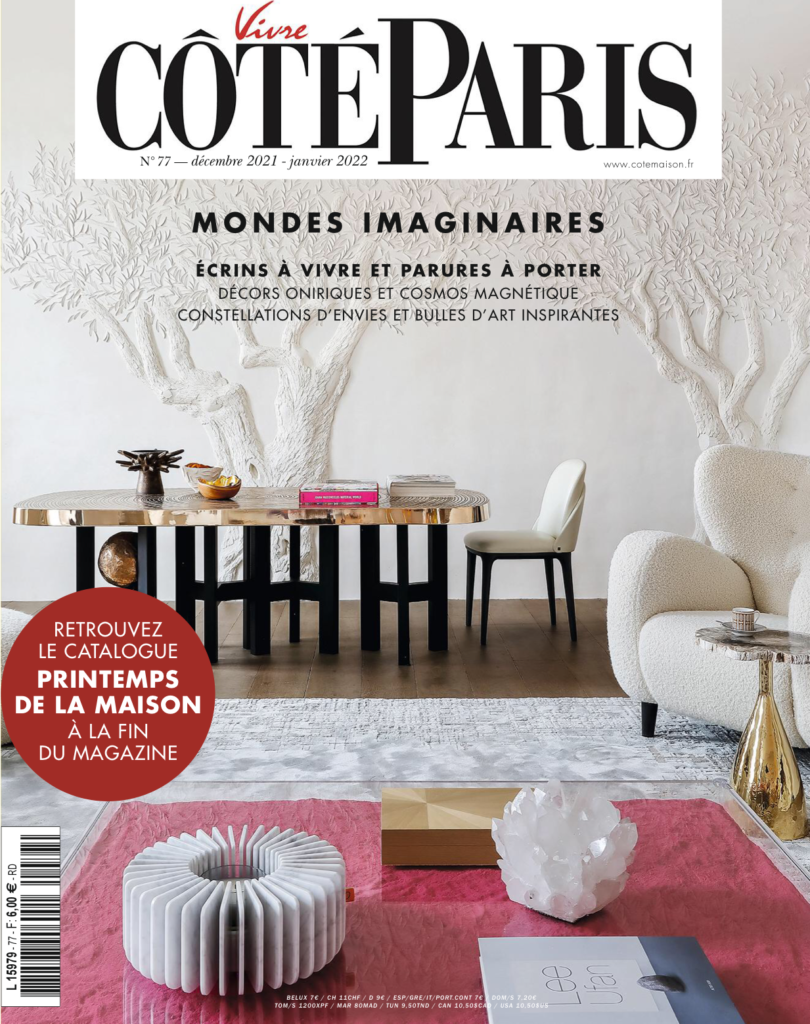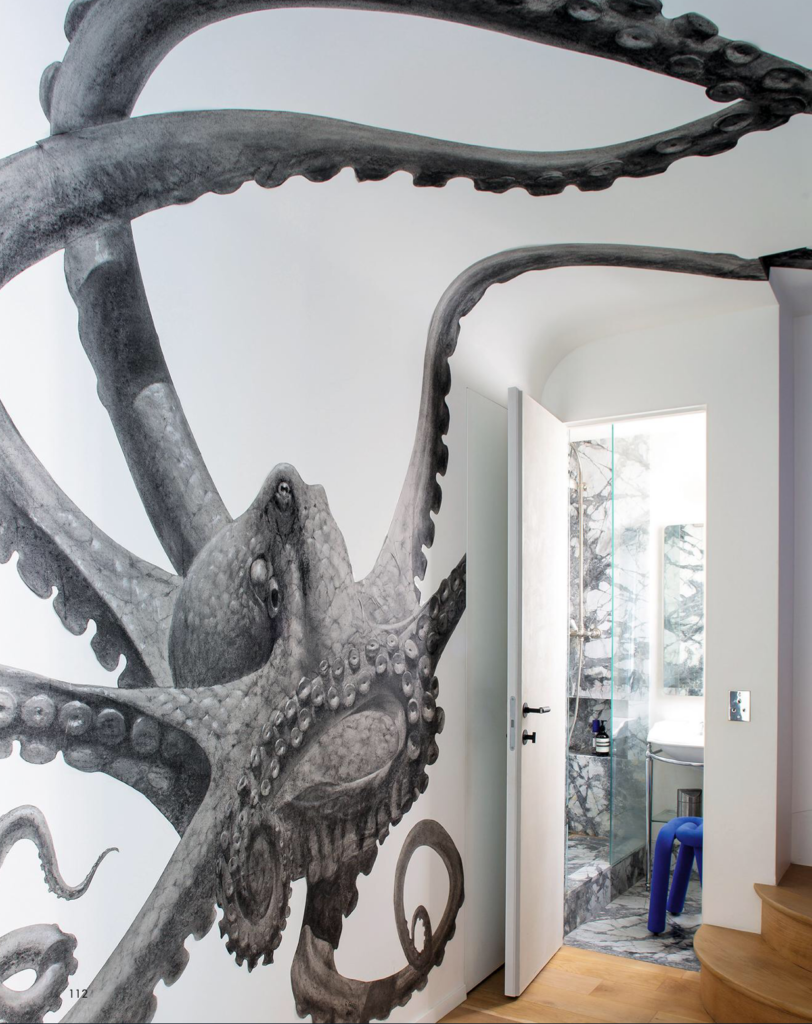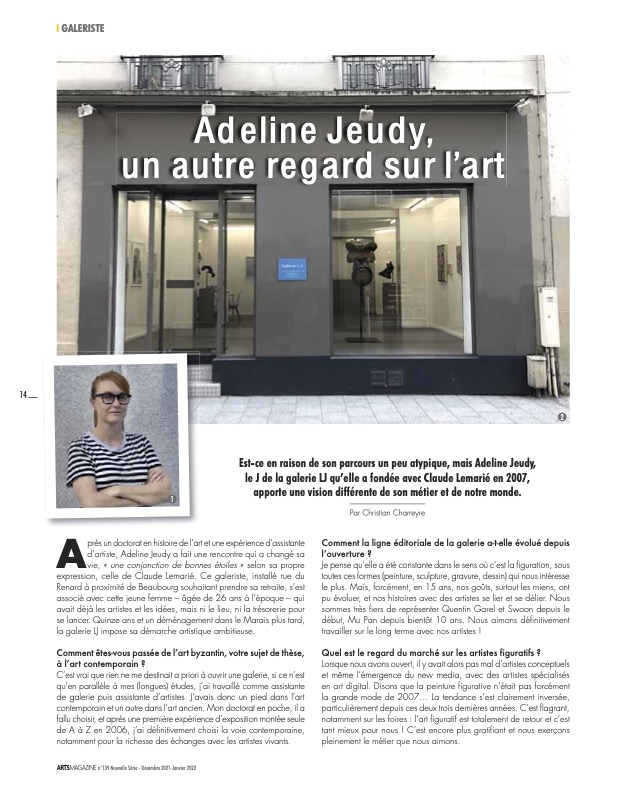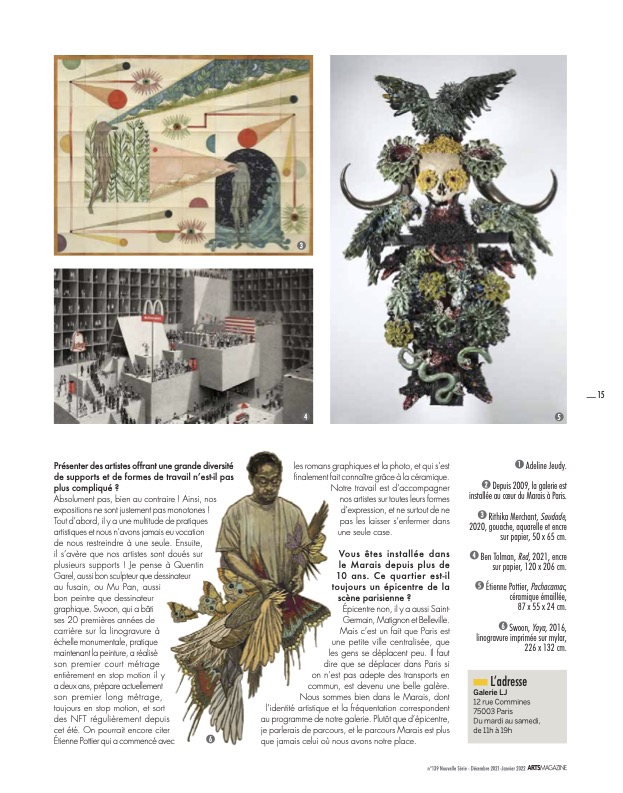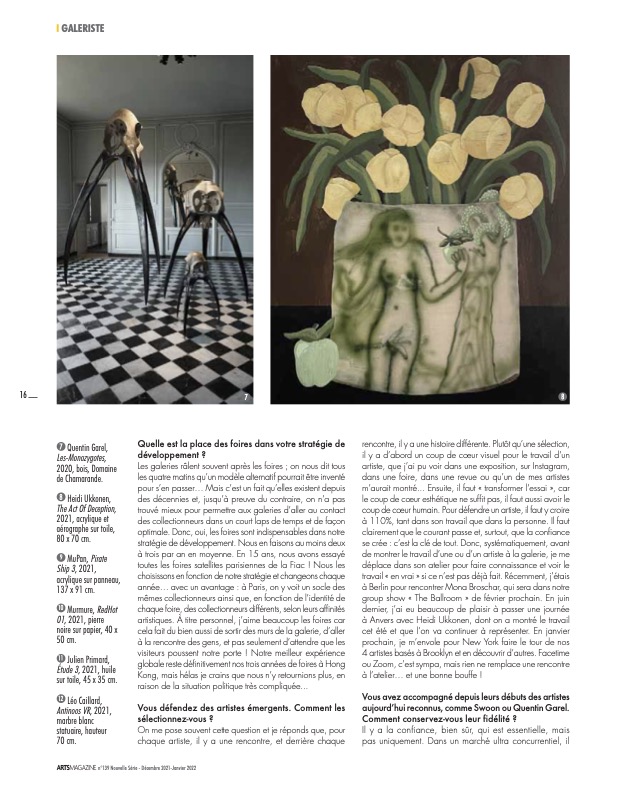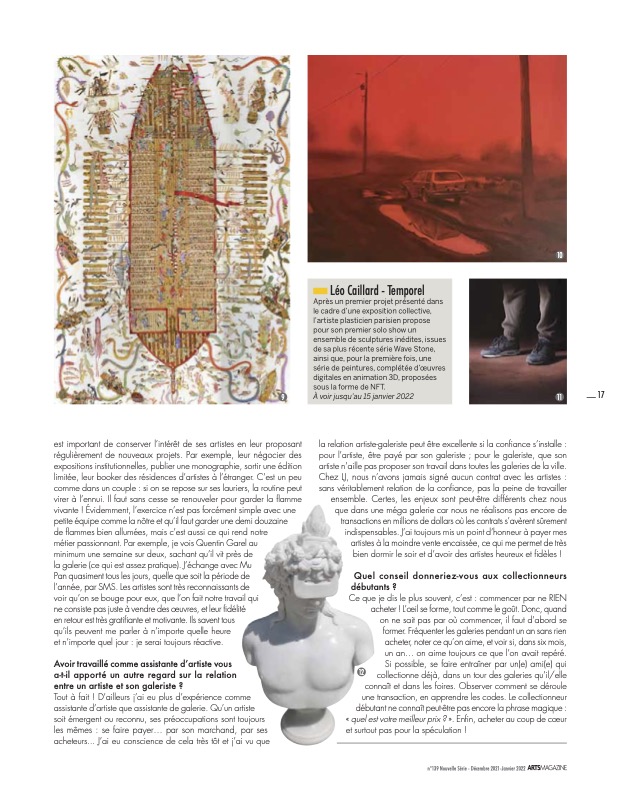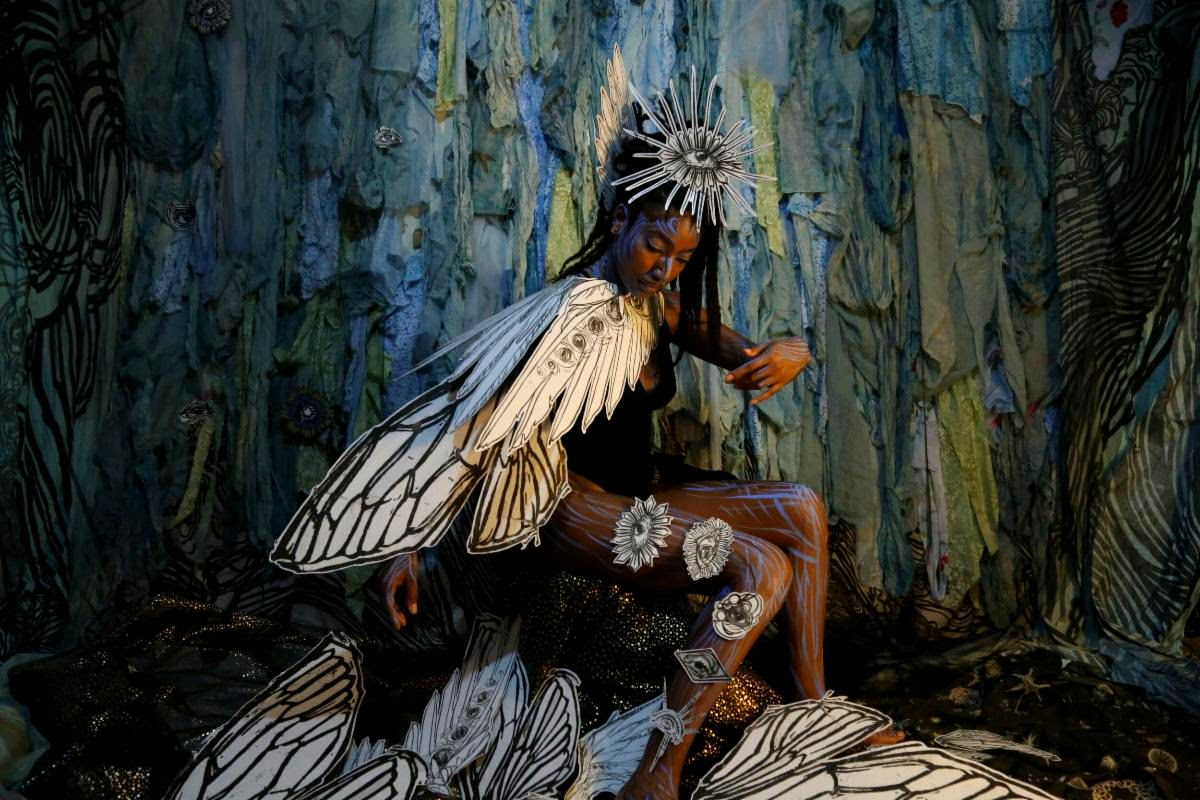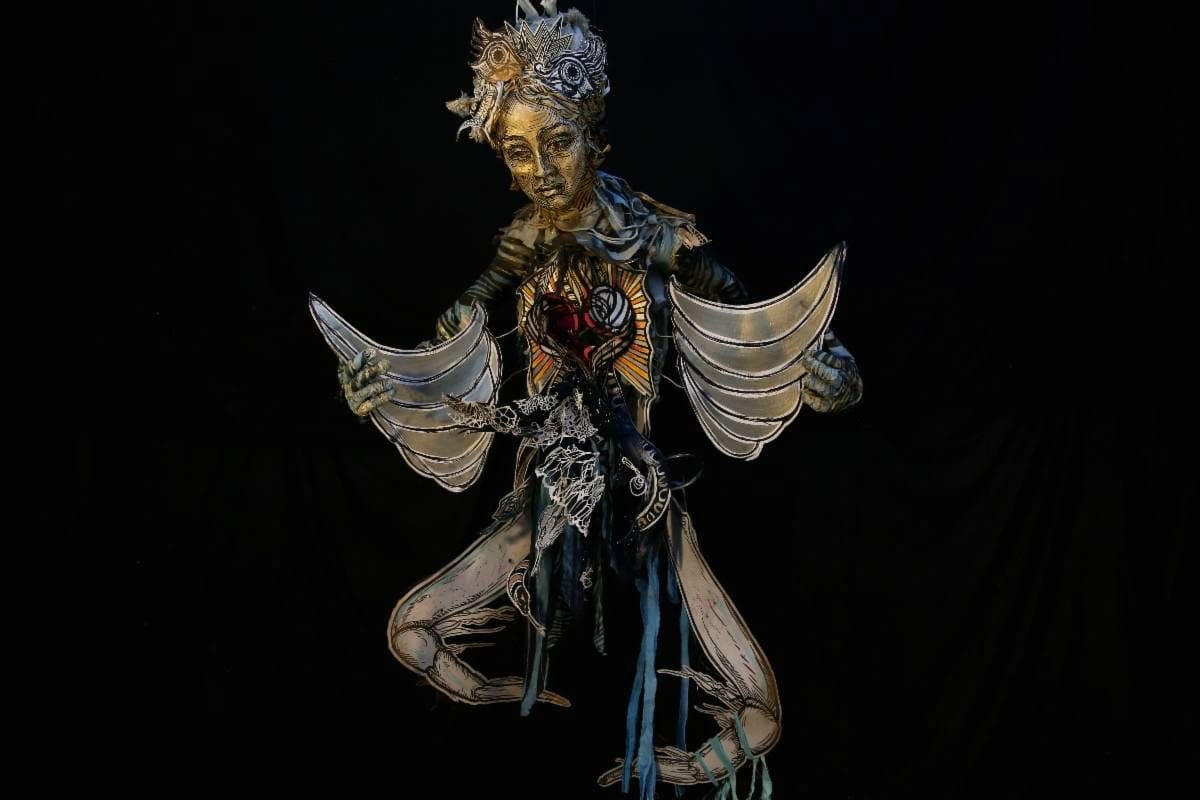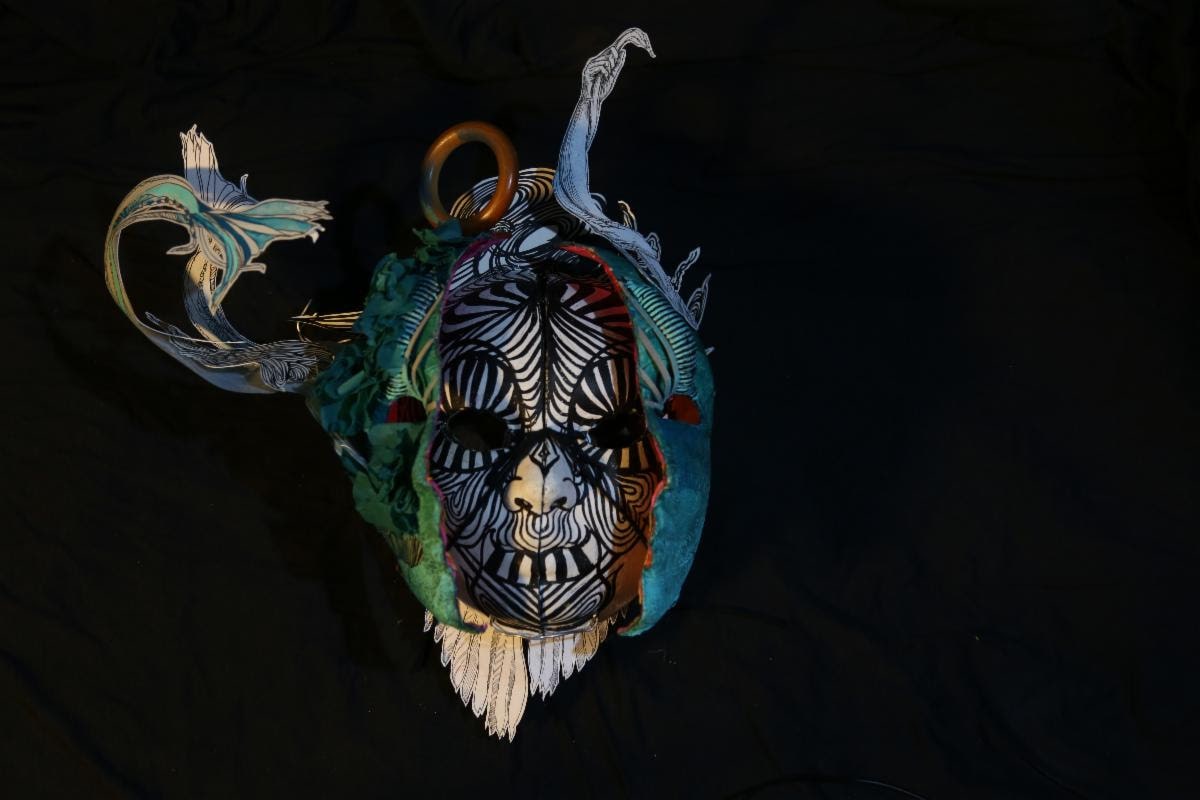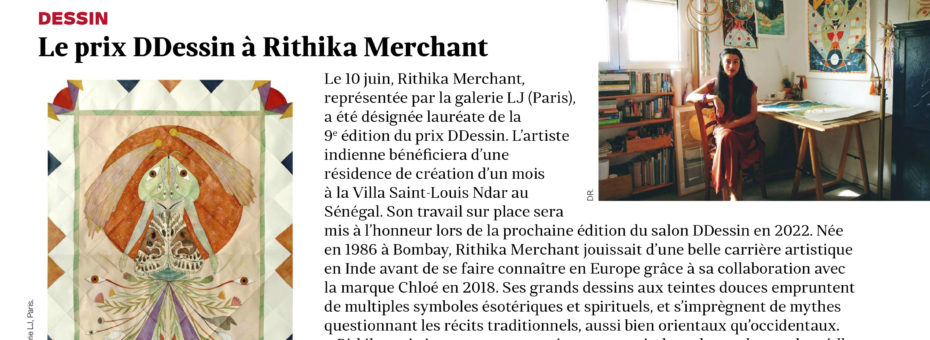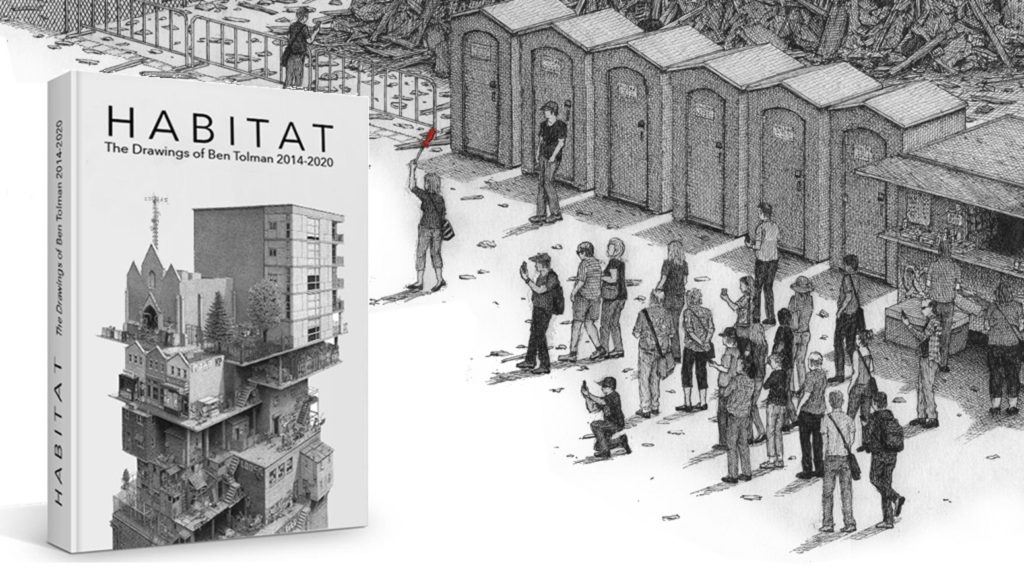23 June 2021
Where winged women fly away: The art of Rithika Merchant
by Ritika Kochhar
Artist Rithika Merchant, who won this year’s Vogue Hong Kong Women’s Art Prize, dabbles in myths, nostalgia and apocalyptic climate change.
Saudade is the Portuguese word for ‘bitter-sweet’. It represents a deep nostalgia or melancholic longing for something or someone absent. Barcelona and Mumbai-based artist Rithika Merchant’s work Saudade shows two figures looking in opposite directions. “Two selves stand in conversation. One has returned from the future with a warning of the doom that lies ahead if we do not change our ways,” says Merchant, who was recently awarded the Vogue Hong Kong Women’s Art Prize at the 2021 Sovereign Asian Art Prize. Saudade won the highest marks from the jury for a woman artist out of 700 entries from Iran to Japan. “This piece evokes the bitter-sweet feeling my generation has when we think about the past and the future,” she says.
Saudade was part of an exhibition held in Mumbai earlier this year called ‘Birth of a New World’. While the exhibition was ostensibly about the
apocalyptic effects of climate change, its name alluded to a compelling conversation around the world. The Birth of the New World is a 360-foot bronze sculpture of Christopher Columbus located in Arecibo, Puerto Rico, which shows the explorer and his three ships traversing the Atlantic Ocean. Statues like this have been flashpoints in debates on imperialists who tortured, killed and enslaved hundreds of natives while amassing wealth. But there is also a contemporary debate on how imperialism and capitalism tie into the discourse on climate change: that a few rich people, countries and companies are destroying the planet.
Eruptions of fire
Merchant’s current show in Berlin focuses on feathered — or winged — women.
She draws on winged spirits, Peris, from Persian mythology. In the original myths, Peris were regarded as fallen angels who were denied entry into Paradise until they had repented. But Merchant’s winged women are shown leaping joyfully as they escape from a scene that appears idyllic at first glance but on closer look, shows small eruptions of fire beneath the delicate, blooming flowers. The paintings imply a freedom that exists beyond the confines of conventional perspectives.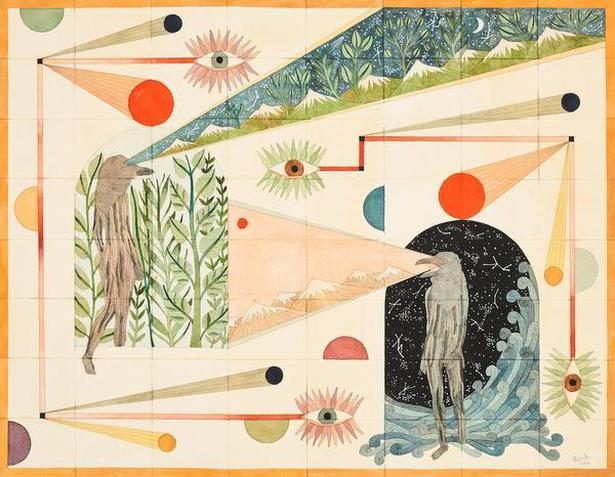
Merchant’s interest in myths began when she read Joseph Campbell’s The Hero With a Thousand Faces. “I have always been very interested in narratives, myths and received histories. I am also interested in how these different fragments are woven together to form a complete image. Most cultures use imagery to tell stories and represent ideas. I try to use these ancient means of storytelling in a more contemporary context. Myth-making brings humanity back to the centre of concern, unlike science, which places humans as part of a greater scheme. Much as science gives an accurate description of humanity, it takes away the spiritual power given to every human to understand their own destiny,” she says.
Links to the past
Merchant’s work is filled with literary allusions, contemporary world events, international mythology, feminist references, botanical drawings and folk art. She uses symbols from epics — Greek, Indian, Portuguese — as well as folk art and science fiction to weave parallel narratives across societies to show links to our collective past.
Her fairly big paintings look familiar and exotic at once. The materials she uses, such as cut-paper collages, embroidery hoops, jute string, mother of pearl buttons, and other household materials, add to a sense of familiarity. “The whole tradition of craftmaking by women is to me a very powerful thing,” she says. “Incredibly talented women artists such as Leonora
Carrington and Remedios Varo used a lot of these materials and they were sort of brushed away as things that just women were interested in; but they made these profound paintings that made so much sense in the world then and now. There’s something powerful in reusing scraps to make something new. So I make my collages from scrap pieces I find around my studio, beating them, putting them together, and making this entirely new thing.”
Citizen of the world
‘Birth of a New World’, for example, used 27 paintings to tell a story about this point in history when climate change heralds an almost insurmountable challenge to the planet and the choices we have to make to save future generations. The exhibition took this conversation to its next logical step after the Anthropocene: rising water levels, space-travel, gateways to a different time, as well as Kalki bringing back a simpler, more optimistic age, ending the despairing Kali Yuga.
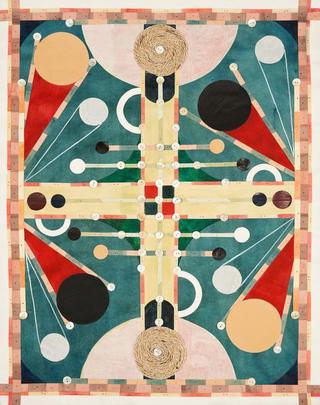
Merchant has seen both commercial and critical success since 2016 when French designer Natacha Ramsay-Levi saw her work on Instagram and invited her to design for the famous Paris brand Chloé. Merchant produced paintings filled with esoteric and spiritual symbols, as well as botanical images for Chloé’s summer 2018 collection. This collaboration earned her the Young Achiever of the Year at the Women of the Year 2018 Awards from Vogue.
Galerie LJ, Paris, showcased Merchant in spring 2019, first with a group show and then with a solo show in December 2019. Her next group exhibition will be held in Brussels in 2021, followed by a solo show in Paris in 2022. “Perhaps the very first detail that caught my eye was her use of colour, then almost immediately, the narrative aspect of her works and their composition. She is a great colourist,” says Galerie LJ founder Adeline Jeudy. “Her style is figurative, narrative. We could probably call her a graphic artist, because she works with lines, outlines and compositions, on paper. She often says in interviews that she is a citizen of the world and that’s true, you can see it in her work.”
The writer is the author of the fantasy series Weapons of Kalki, and an expert on South Asian art and culture.








